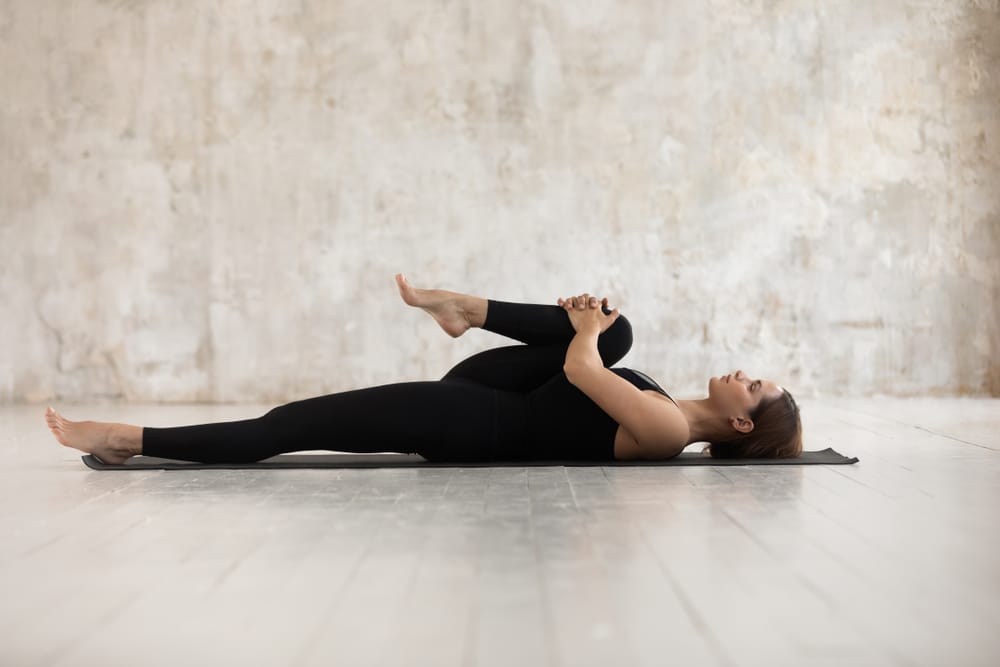Do you struggle with lower back pain flare ups? You’re not alone! Lower back pain is a common issue, affecting millions of people each year. According to the National Institute of Neurological Disorders and Stroke, 80% of adults will experience lower back pain at some point in their lives. Lower back pain can be extremely painful and interfere with daily activities immensely, especially when it spreads to the leg(s). Movements as simple as bending over to put on your shoes or sitting up out of bed in the morning can go from mindless to excruciating.
Lower back pain can affect anyone, but it is more common in people between the ages of 30 and 50. People who have physically demanding jobs (i.e. bending, heavy lifting) or those who spend long hours sitting are more likely to experience lower back pain. Additionally, people who are overweight, are not active, or have poor posture are also at a higher risk. Remember this: motion is lotion. Motion is crucial for the spine to keep the discs in the spine hydrated and the spine happy.
If lower back pain goes undiagnosed and untreated, it can worsen and become debilitating. This article will share some of the best physical therapy exercises for lower back pain commonly recommended by spine specialists and physical therapists. These exercises may help prevent or treat existing lower back pain.
If you want to learn more about causes of back pain, common symptoms of back pain, and treatment options read our Back Pain Overview.
Physical Therapy for Lower Back Pain
Physical therapy is a form of treatment that uses exercises, stretches, and manual therapy to help alleviate pain, improve mobility, improve strength, and improve your overall functional quality of life. It is an effective way to treat lower back pain as it can help to relieve pressure on the spinal column and improve posture and body awareness. Regular physical therapy is particularly helpful for people who have chronic lower back pain, as it can help to reduce the need for long-term pain medication and improve day to day quality of life.
What type of exercises are used in physical therapy?
Physical therapy exercises for lower back pain usually include a combination of static stretches, mobility exercises, and strengthening exercises. What do each of those mean?
- Static Stretches of the back, hips, and legs are often used to improve flexibility and reduce muscle tension surrounding the lower back.
- Mobility exercises are used to improve your active movement with control and stability, especially for spine rotation, sidebending, and bending forward and backward.
- Strengthening exercises are used to improve the stability and often involve strengthening of the core muscles – your natural back brace.
When you improve your flexibility, mobility, and strength, not only will you feel better, but you will also reduce risk of future injury. Let’s get to the exercises.
Mobility Exercises and Stretches for Lower Back Pain
Below are some of the best mobility and stretching exercises for lower back pain:
- Cat and cow stretch
- Lower back stretch
- Lower back rotational stretch
- Downward dog
- Knee-to-chest stretch
- Sphinx
- Hip flexor stretch
- Glute stretch
- Hamstring stretch
- Piriformis stretch
Strengthening Exercises for Lower Back Pain
Below are some of the best strengthening exercises for lower back pain:
- Side plank
- Partial crunches
- Pelvic tilts
- Transverse abdominal contraction
- Pelvic tilts
- Plank Pikes
- The Hundred
- Good morning
- Bird dog
- Bridge
How many times a week should I do lower back pain exercises?
Physical therapy exercises should be done regularly to be effective. The frequency of exercise will depend on the severity of back pain or back injury and the progress of the patient. Typically, physical therapy exercises are done two to three times a week, but this may be adjusted based on the needs of the patient. It is important to continue physical therapy for lower back pain even after the pain has subsided, as this will help to prevent future injuries and maintain good posture.
Regular physical therapy exercises for lower back pain can help to prevent future injuries and improve overall health. Build a healthy spine for a happy life!
Disclaimer: Always consult your physician before beginning any exercise program. This general information is not intended to diagnose any medical condition or to replace your healthcare professional. Consult with your healthcare professional to design an appropriate exercise prescription. If you experience any pain or difficulty with these exercises, stop and consult your healthcare provider.
